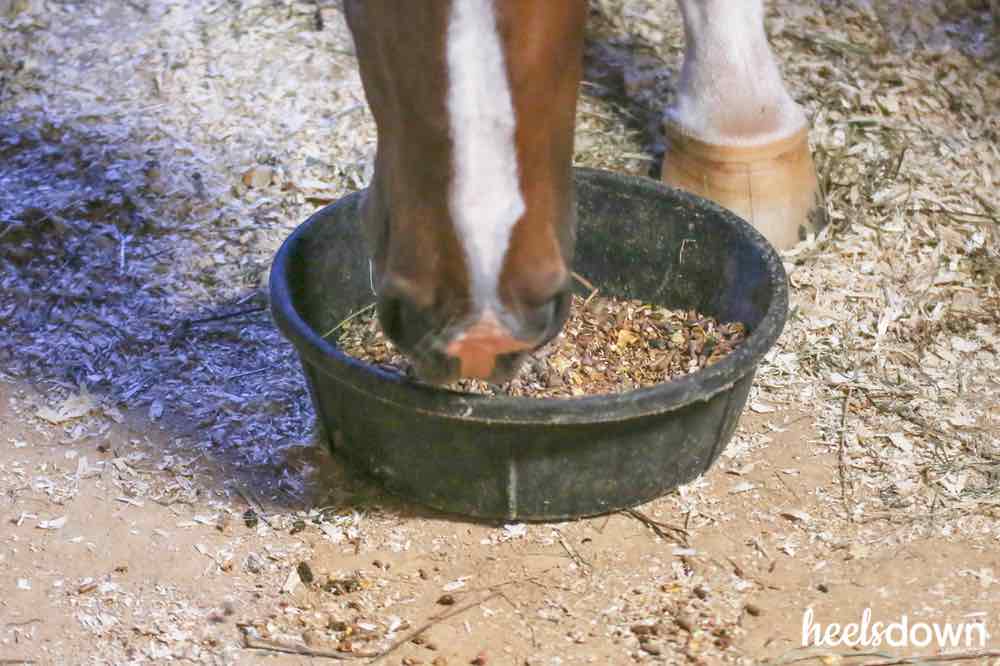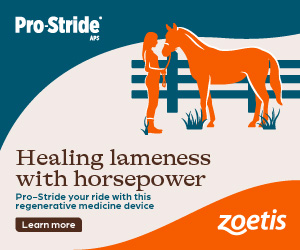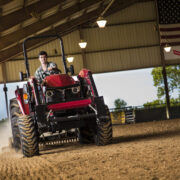Toxic Feed, Lethal Consequences

From positive drug tests to death, horse owners fear the aftermath of equine feed contamination.
When you pour your horse’s grain into his bin, you don’t expect to be feeding him anything that could jeopardize your show record. You certainly wouldn’t imagine that you’re feeding him something deadly.
But in the past several years, there have been a number of cases of contamination, some of which have resulted in the deaths of horses, while others have gotten reputable riders banned from competition. While these cases are rare, accidental feed and supplement contamination can have profound consequences.
“The two big ones right now that are in the news are monensin and ractopamine,” said Joe Pagan, Ph.D. and founder and president of Kentucky Equine Research, an international equine nutrition research and consulting firm. He explained that both substances are legal feed additives for other types of livestock besides horses – monensin is used in cattle and poultry to improve growth and prevent parasitic infections, and ractopamine is used for muscle growth in pigs.
“Horses should not be fed any level of monensin at all. They are too susceptible to it – about 20 times more sensitive than cattle, and even cattle can become toxic from too much monensin,” said Dr. Guillermo Rimoldi, a veterinary anatomic pathologist at the Clemson Veterinary Diagnostic Center in Columbia, S.C. He explained that clinical signs of monensin toxicity in horses can include muscular fasciculation (muscle vibration or twitching), colic-like symptoms, stumbling, falling, and death. A horse can die as fast as 24 hours after ingesting monensin.
Twenty-two horses were poisoned by monensin contamination in their regular horse feed from Lakeland Animal Nutrition at a Florida stable in Oct. 2014. More than half of the affected horses died, and the company reached a settlement with the owners. Three more horses allegedly fell victim to monensin in South Carolina in Dec. 2014, although the feed manufacturer, ADM Animal Alliance, denies that levels of the substance found in the feed were unsafe. Thirteen more died in Sept. 2015 in California after feed from Western Milling was contaminated and later, recalled.
Ractopamine, on the other hand, won’t kill your horse, but it will result in a positive drug test, like it did for Olympian Adrienne Lyle and U25 dressage standout Kaitlyn Blythe, whose horses were banned from competition by the FEI after a supplement they fed. Cargill’s Progressive Nutrition Soothing Pink supplement was accidentally contaminated with ractopamine and was pulled from the market, according to a statement by the company.

For owners looking to investigate the source of their horses’ feed, it’s not a question of whether or not the feed mill makes products for other livestock. Cattle feed, for instance, is not inherently harmful to horses – only cattle feed that is medicated with monensin could be.
“The vast majority of cattle feed that’s manufactured does not contain monensin. So a feed manufacturer could be making feed for cattle, and as long as it’s not medicated, it wouldn’t do any harm at all,” Joe explained. “If horse owners are trying to figure out if they should get a product from a specific feed manufacturer, they should not ask, ‘Do you make cattle feed?’ The question more precisely is, ‘Do you make cattle feed that contains medication?’ and monensin specifically.”
Any company that produces livestock feed with monensin is regulated by the Food and Drug Administration and has strict protocols, like flushing the equipment between batches. So how do substances meant for other species of animals, sometimes end up in horse feed?
[Feed manufacturers] were worried about killing horses, not so much positive FEI drug tests.
“In the cases of contamination that I have seen, it’s a mixing error but not mixing in that they added too much, but a mix error in that they added it at all – as if they were preparing cattle feed or feed for another species – whether that was human error or computer error,” said Dr. Rimoldi, who was involved in studying the 2015 cases of monensin poisoning in California.
Some facilities opt out of having certain medications like monensin in their facility at all because even with safety protocols in place, mistakes happen.
“A good analogy is peanut allergies. A very small amount is harmful to people with those allergies so in a lot of instances the best way to prevent it is just to not have peanuts around,” Joe said. “You can safely have peanuts in a factory and safely make peanut-free products but you’ve got to be really, really careful.”
Feed manufacturers know that monensin cannot be present in any levels of equine feed because it’s often fatal for horses. But many manufacturers, especially those that don’t specifically focus on feed for high-performance equines, are just recently becoming aware of substances that are harmless to horses but can cause positive drug tests at competitions – like ractopamine.
“You can have positive drug tests with relatively safe ingredients. That was not the mindset of most manufacturers,” Joe explains. “They were worried about killing horses, not so much positive FEI drug tests. We’ve been the feed advisors for the last six Olympics so this is at the forefront of our minds, but hasn’t been for general feed manufacturers.”
The unprecedented sophistication of laboratory testing can detect extremely low levels of substances, which can make drug testing a bit more complicated. In some cases, background contamination – exposure to a substance in the early phases of growing or producing an ingredient before the feed is manufactured – can cause a positive drug test.
“These days, analytical laboratories have gotten better and better and they can find these prohibited substances at very low levels,” Pagan says.
Last year, for example, a show jumping horse in South Africa tested positive for a banned substance that turned out to be a chemical in the owner’s hairspray.
“Feed manufacturers are trying hard for this not to happen,” Joe says. “It’s not because of recklessness and disregard. They’re not bad guys and they don’t want it anymore than anybody else.”


